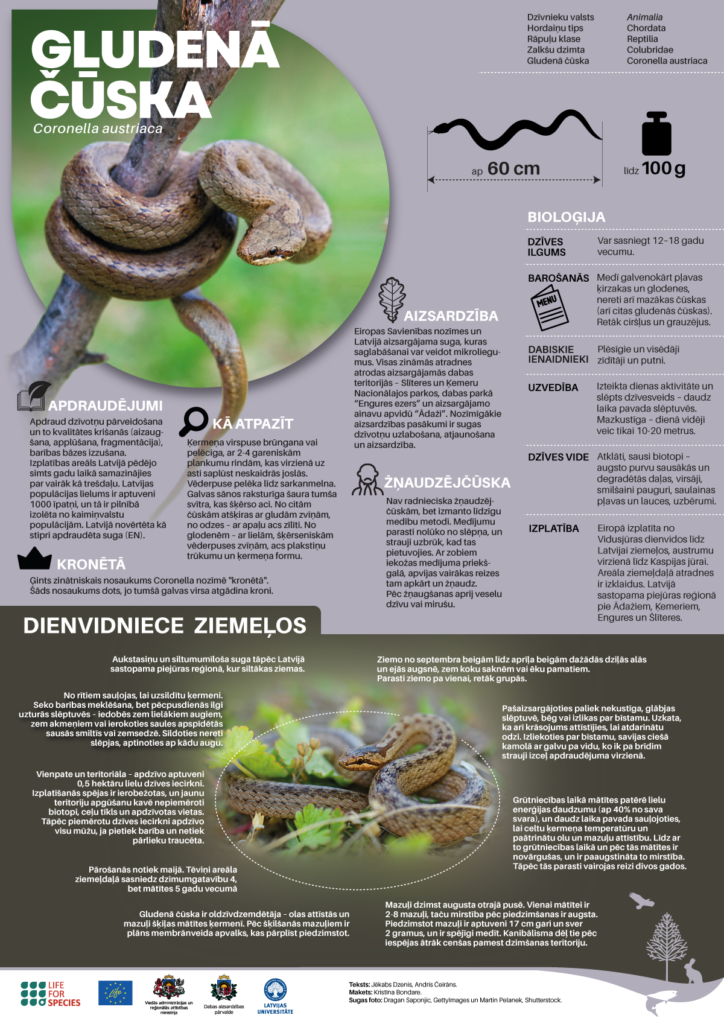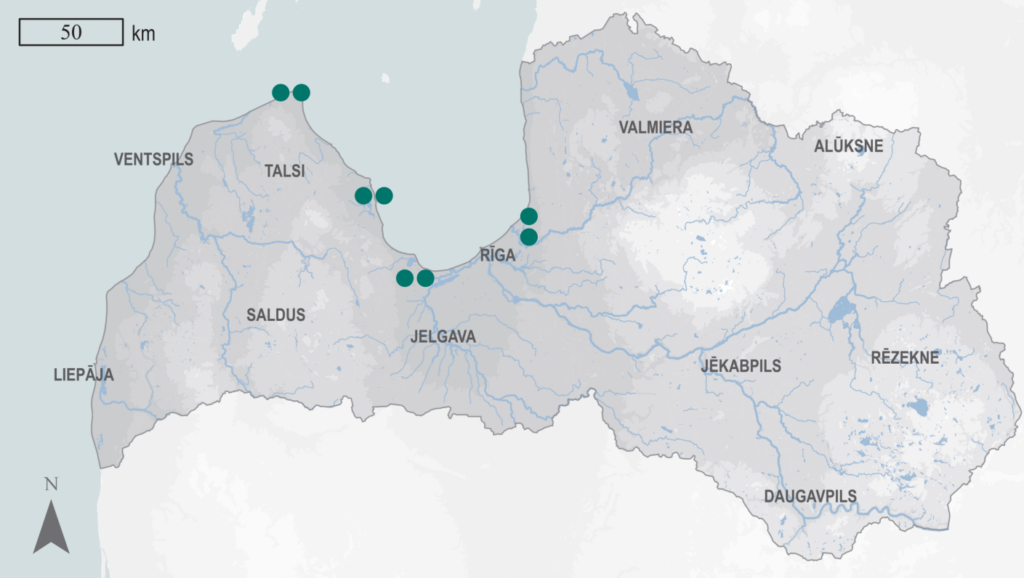Protected species of the month - the smooth snake
As May draws to a close, the weather finally begins to treat us to warmer days, inviting more frequent outings into nature. During your walks, keep an eye out for this month’s protected species – the smooth snake (Coronella austriaca).
The genus name Coronella comes from the dark markings on the top of the head, which faintly resemble a crown. The smooth snake’s body can be brownish or greyish, with 2–4 longitudinal rows of spots that merge into diffuse bands toward the tail. The underside is grey to reddish-black. A narrow dark stripe runs along the side of the head, passing through the eye. It differs from other snakes by having smooth scales; from the common viper (adder) by its round pupil; and from slow worms by its large, transverse belly scales, lack of eyelids, and more defined body shape.
The smooth snake is cold-blooded and thermophilic, meaning it thrives in warmth. In Latvia, it is found mainly in coastal regions, where winters are milder.
Although snakes may not be everyone's favorite encounter, the smooth snake is non-venomous, and spotting one in the wild is truly a rare event. In the LIFE FOR SPECIES project, it is assessed as Endangered (EN), meaning it faces a very high risk of extinction in the wild.

Smooth snakes mate in May, making this the time when they are most likely to be seen. During pregnancy, females expend a significant amount of energy – up to 40% of their body weight – and spend a lot of time basking to raise their body temperature and speed up the development of eggs and young. As a result, females become weakened during and after pregnancy, with increased mortality rates. For this reason, they usually reproduce only once every two years.

The smooth snake is ovoviviparous – the eggs develop and hatch inside the female’s body. At birth, the hatchlings are encased in a thin membrane that breaks open during birth.
Young snakes are born in the second half of August. A female typically gives birth to 2–8 hatchlings, but postnatal mortality is high. At birth, they are around 17 cm long, weigh about 2 grams, and are capable of hunting. Due to cannibalism, they try to leave their birthplace as quickly as possible.
